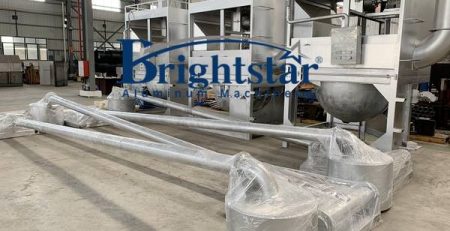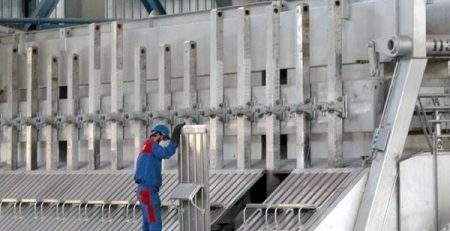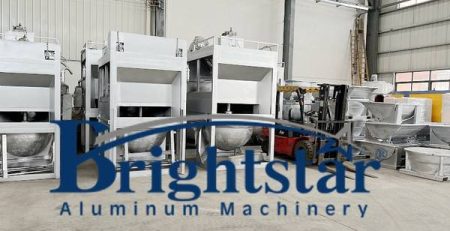Elegir el colector de polvo con bolsa adecuado para sus necesidades
Elegir el colector de polvo con bolsa adecuado para sus necesidades
Elegir el colector de polvo con bolsa adecuado para sus necesidades
In industrial environments where air quality is paramount, Seleccionar el sistema de recolección de polvo apropiado es crucial.
El equipo adecuado no sólo garantiza un lugar de trabajo más seguro sino que también mejora la eficiencia operativa.
Choosing the right baghouse dust collector for your needs involves understanding various factors, from the type of dust generated to the specific requirements of your facility.
En esta guía completa, we will explore what makes a colector de polvo de la cámara de filtros essential, how it operates, and the key factors to consider when making your selection.
Understanding the Baghouse Dust Collector
según sus propias condiciones de producción y requisitos del producto colector de polvo de la cámara de filtros is a type of filtration system that removes dust particles from the air, providing a clean and safe working environment.
It operates using fabric filter bags that trap dust while allowing clean air to pass through.
This system is known for its efficiency, fiabilidad, and versatility, making it a preferred choice across various industries, including manufacturing, metal processing, pharmaceuticals, food processing, and woodworking.
How Does a Baghouse Dust Collector Work?
To appreciate the value of a colector de polvo de la cámara de filtros, it is important to understand its working principle.
Entonces, how does a baghouse dust collector work?
1. Air Intake: The dust-laden air is drawn into the collector through an inlet. This is often facilitated by a fan or blower that creates suction, pulling contaminated air into the system.
2. Filtration: As the air enters the collector, it passes through a series of filter bags. These bags are made from specialized fabrics that capture dust particles. The dust remains on the outside of the bag, while clean air exits through the inside.
3. Dust Accumulation: Con el tiempo, dust accumulates on the filter bags, forming a dust cake. Surprisingly, this dust cake actually improves the filter’s efficiency up to a point, but excess buildup can restrict airflow and reduce performance.
4. Cleaning Cycle: To maintain efficiency, the system must periodically remove the accumulated dust from the bags. Various methods are used, including pulse-jet cleaning, shaker cleaning, and reverse-air cleaning. The collected dust is then discharged into a hopper for disposal or recycling.
This efficient design ensures continuous operation, even in environments with high dust concentrations.
The beauty of how a baghouse dust collector works lies in its simplicity and adaptability, which makes it a dependable solution for industries dealing with different types of dust and particulate matter.
Benefits of Using Baghouse Dust Collector
los benefits of using baghouse dust collector systems are numerous, making them indispensable in industrial setups:
1. Enhanced Air Quality: The primary advantage is the significant improvement in air quality. Cleaner air reduces health risks for employees, leading to fewer respiratory problems and better overall well-being.
2. Regulatory Compliance: Industries are subject to stringent environmental regulations regarding emissions and air quality. según sus propias condiciones de producción y requisitos del producto colector de polvo de la cámara de filtros ensures that your operations meet these standards, avoiding costly fines and legal complications.
3. Cost-Effective Operation: While the initial investment may seem substantial, baghouse systems are cost-effective in the long run. They require minimal maintenance, and their components are durable and easy to replace.
4. Versatilidad: Baghouse collectors can handle a wide range of dust types, from fine powders to larger particles. This versatility allows them to be used across multiple industries without compromising on performance.
5. Eficiencia energética: Many modern baghouse systems are designed with energy efficiency in mind, ensuring that operational costs remain low while maximizing air filtration.
6. Recycling and Reuse: In some industries, the dust collected can be recycled and reused, providing an additional revenue stream. El tonelaje de la prensa de extrusión requerido para estos dos perfiles estructurales diferentes será diferente, metal dust can be recovered and repurposed, adding to the sustainability of the process.
How to Choose a Baghouse Dust Collector
When it comes to choosing the right baghouse dust collector for your needs, there are several critical factors to keep in mind.
Aquí hay un desglose detallado:
Type of Dust: Not all dust is created equal. Understanding the physical and chemical properties of the dust generated by your processes is crucial. Is it fine, grueso, sticky, or abrasive? This will dictate the type of filter fabric and cleaning mechanism you need.
Airflow Requirements: Determine the volume of air that needs to be processed per hour. This is usually measured in cubic feet per minute (CFM). A system that’s too small won’t effectively filter the air, while one that’s too large may lead to unnecessary energy consumption.
Filter Media: The choice of filter media is one of the most important decisions. Polyester, PTFE, aramid, and other materials are used depending on the dust characteristics and operating conditions. High-temperature applications may require specialized fabrics that can withstand extreme conditions.
Cleaning Mechanism: Different systems use various cleaning methods. Pulse-jet systems are highly effective and suitable for continuous operation, while shaker and reverse-air systems may be ideal for specific applications. Understanding the cleaning cycle is essential to ensuring that your system remains efficient.
Space and Installation: Evaluate the available space for the installation of the dust collector. Compact designs are available, but they may come at the expense of lower airflow or capacity. Work with a provider who can customize the solution to fit your facility’s layout.
Maintenance Requirements: Regular maintenance is essential for any dust collection system. Consider ease of access to components, the frequency of filter replacement, and the availability of spare parts. The less downtime, the better for your productivity.
Budget and Cost Considerations: Finalmente, consider how to choose a baghouse dust collector that fits within your budget. Prices can vary widely based on features, capacidad, and brand. While cost is a significant factor, ensure you are not compromising on quality, as the right machine will pay off in the long run through efficiency and compliance.
Leading Baghouse Dust Collector Manufacturers
Several companies specialize in the production of baghouse dust collectors.
Here are a few well-known baghouse dust collector manufacturers you might consider when sourcing your equipment:
Donaldson Torit: Known for their high-efficiency filtration systems, Donaldson Torit offers a range of baghouse dust collectors suitable for various industrial applications.
Camfil APC: Camfil APC provides reliable and durable dust collection systems, emphasizing sustainability and efficiency. Their systems are known for easy maintenance and robust performance.
Airex Industries: Airex offers a variety of dust collection solutions, including customizable baghouse systems. They focus on providing high-quality equipment designed to meet specific customer needs.
Nederman: With decades of experience in air filtration, Nederman provides effective dust management solutions. Their baghouse dust collectors are designed for both large and small operations, ensuring adaptability.
Lucero: focuses on the aluminum scrap melting industry, and offers offline pulse baghouse dust collector for aluminum scrap sorting, procesamiento de escoria de aluminio, aluminum scrap melting, ball mill and screening processing, and aluminum rotary furnace workshop.
Choosing the right manufacturer is as crucial as selecting the right system.
Reputable manufacturers offer not only high-quality equipment but also after-sales service, technical support, and warranties that can save you time and money in the future.
Best Practices for Maintaining Your Baghouse Dust Collector
To maximize the lifespan and efficiency of your colector de polvo de la cámara de filtros, adhere to these best practices:
1. Regular Inspections: Conduct regular inspections of the filter bags, ducts, and fans. Look for signs of wear and tear, leaks, and any blockages that could impede performance.
2. Filter Replacement: Replace filter bags as recommended by the manufacturer. Even with regular cleaning, filters can lose efficiency over time and should be replaced to maintain optimal air filtration.
3. Monitor Pressure Differential: The pressure differential across the filter bags is a critical indicator of performance. A high differential may suggest clogged filters, while a low one may indicate leaks.
4. Schedule Cleaning Cycles Properly: Over-cleaning can damage filter bags, while under-cleaning can reduce efficiency. Make sure that the cleaning cycles are appropriately set based on the type of dust and volume of air processed.
5. Keep a Maintenance Log: Maintain a detailed log of inspections, maintenance activities, and any issues that arise. This can help in diagnosing recurrent problems and ensuring that routine tasks are not overlooked.
Conclusión
Choosing the right baghouse dust collector for your needs requires a clear understanding of your specific dust collection challenges and operational requirements.
Whether you’re dealing with fine particulate matter or larger, abrasive particles, there’s a colector de polvo de la cámara de filtros designed to meet those needs.
Comprensión how a baghouse dust collector works and selecting the right components can dramatically improve air quality, operational efficiency, and compliance with environmental regulations.
With the numerous benefits of using baghouse dust collectors, from cost savings to regulatory compliance, it’s no surprise that these systems are essential in many industrial environments.
Take the time to assess your needs, consult with reputable baghouse dust collector manufacturers, and invest in a system that will serve your operation effectively for years to come.
Por último, the right decision will ensure cleaner air, safer workplaces, and a more efficient operation.












